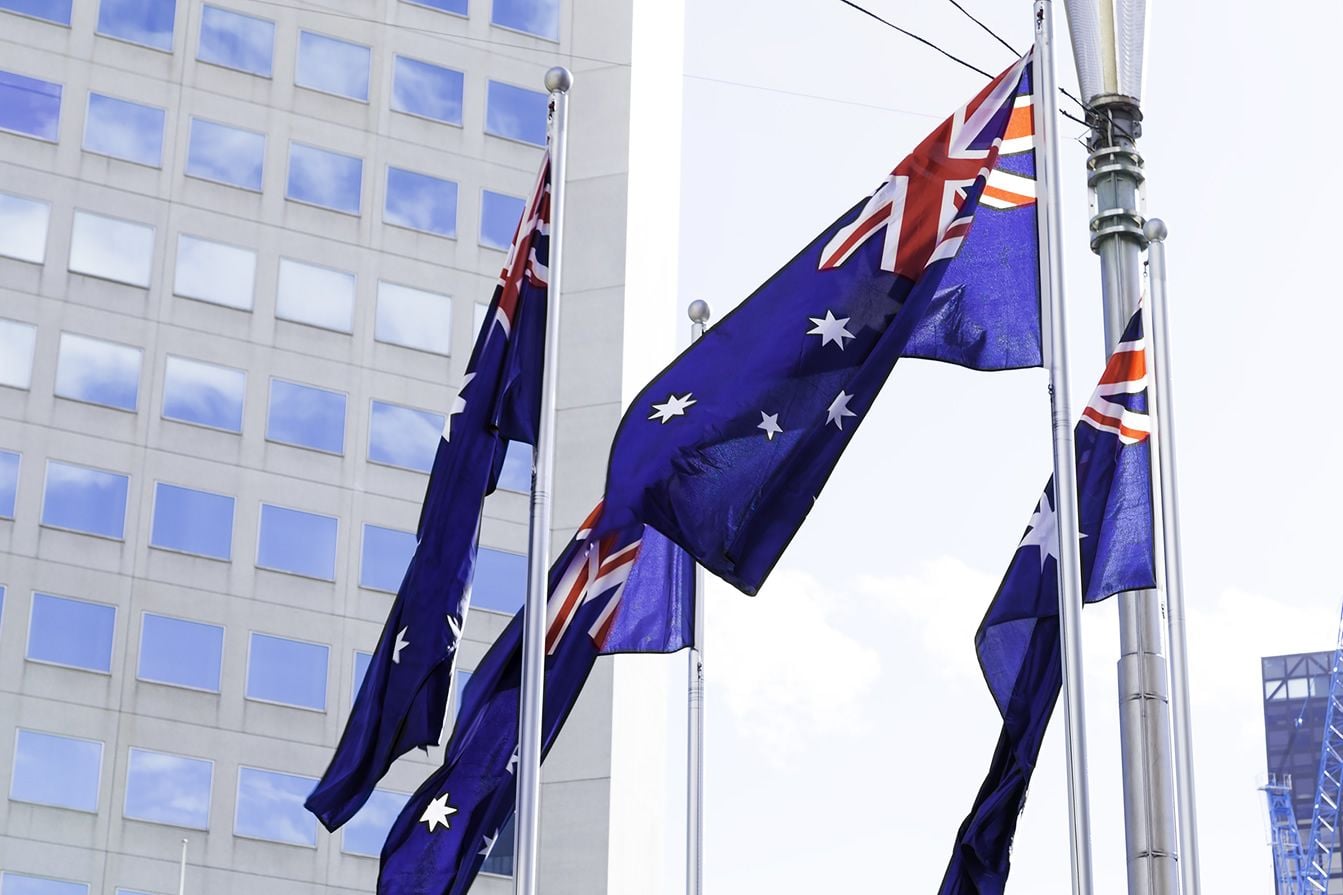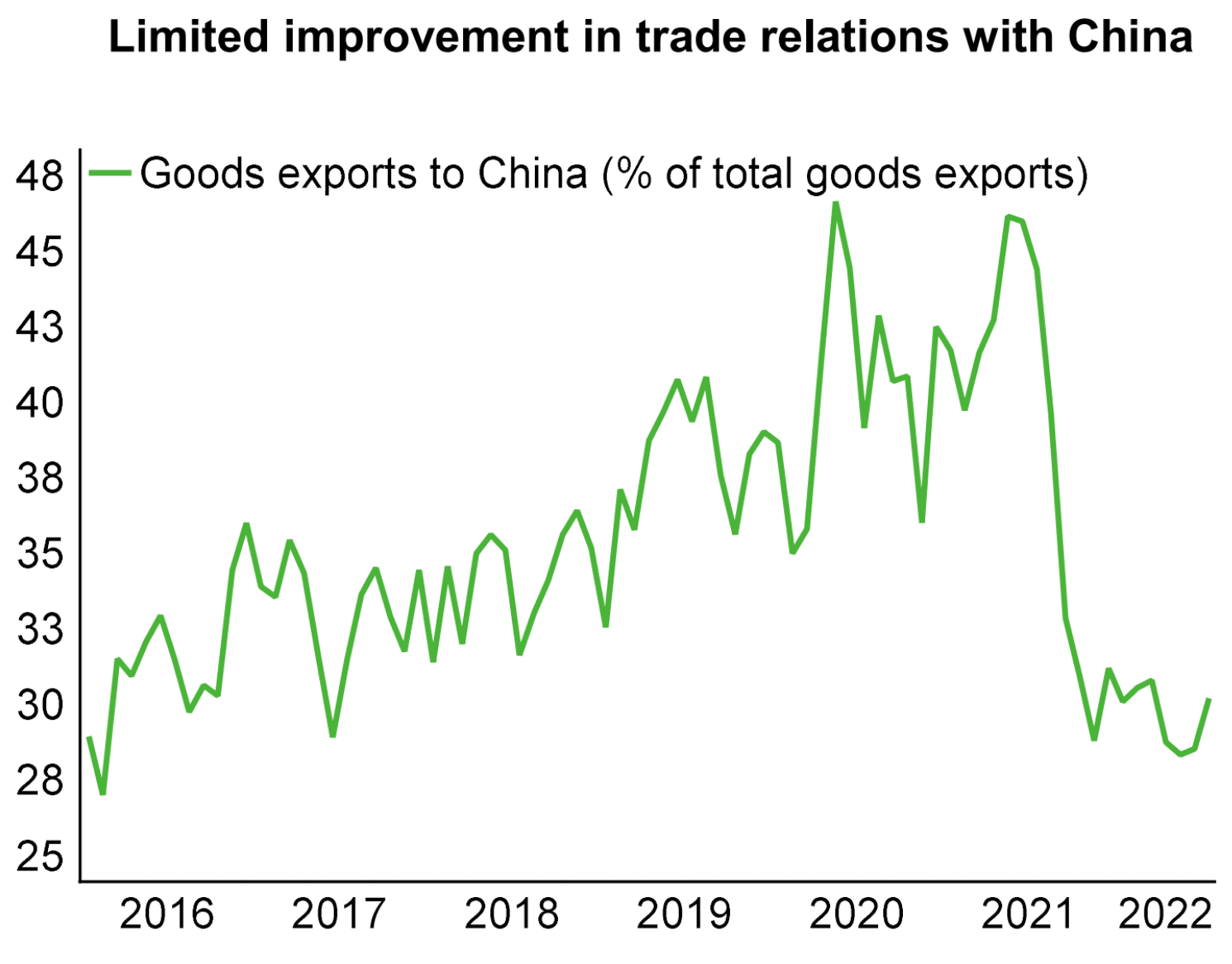Australian Dollar Forecasts: Credit Suisse, Goldman Sachs Staying Bearish
- Written by: Gary Howes
-
- Goldman Sachs cut AUD forecasts
- Raising GBP/AUD forecast profile
- Credit Suisse says staying bearish AUD

Image © Adobe Images
Stay bearish on the Australian Dollar say analysts at Credit Suisse, while their peers at Goldman Sachs say they have recently revised lower their forecasts for the currency, including against the Pound.
"We remain bearish on AUD, despite the seemingly obvious appeal of a sharp increase in Australian terms of trade," says the head of foreign exchange strategy and research at Credit Suisse, Shahab Jalinoos.
A new research note from Goldman Sachs meanwhile says headwinds blowing against the commodity Dollar complex are likely to persist longer than initially anticipated, forcing a downgrade in forecasts.
"Given the extent of the market moves over the past couple of weeks and the fact that we expect the 'FCI loop' to persist for now, we have revised our forecasts for CAD, AUD, and NZD to reflect the still-elevated risk backdrop over the near-term," says Kamakshya Trivedi, Co-head of foreign exchange strategy at Goldman Sachs.
The calls come as global equity markets remain in a committed downtrend amidst souring global market sentiment and falling growth expectations linked to the conflict in Ukraine, slowing Chinese growth and expectations for yet higher interest rates at the Federal Reserve.
Slowing demand out of China for Australian exports is meanwhile seen as a specific headwind facing the Aussie Dollar.
"Reduced trade with China, due to soft local demand and ongoing diplomatic tension between the two countries, adds to the disconnect between commodities prices and AUD," says Jalinoos.
Above image courtesy of Credit Suisse.
But Credit Suisse says the commodities story, typically seen as supportive of the Aussie, is more multi-dimensional than a pure play on Chinese growth.
"Despite Australia’s status as a major energy and metals exporter, AUD is still unlikely to see proportional gains from higher global prices of commodities, as export revenues are increasingly recycled into dividend and interest payments to foreign owners of local mining assets," says Jalinoos.
The Reserve Bank of Australia (RBA) has meanwhile also turned into something of a domestic headwind, slowing down the pace at which it raises interest rates, as other central banks keep their foot to the floor.
"The RBA has been relentless in signalling to markets its unwillingness (or inability) to hike rates at the same pace as the Fed or the ECB. Lack of data pointing to an urgent need for tightening has also kept markets positioned for a slower and longer RBA tightening cycle," says Jalinoos.
The slowdown in the RBA's hiking cycle became clear to investors last week when the RBA surprised markets by opting to hike by a further 25 basis points, and not the 50bp that was expected.
"Meanwhile, AUD's high sensitivity to risk sentiment has pushed markets to price in a very high premium for AUDUSD puts over calls. This creates attractive entry points to position for further AUD weakness via structures that perform best in a slow grind scenario. Which is what we anticipate with the RBA hiking rates at a more measured pace than its key peers," adds Jalinoos.
Goldman Sachs says it anticipates the pro-USD environment that hampers 'high beta' currencies such as the Aussie Dollar to persist for longer.
"Given the extent of the market moves over the past couple of weeks and the fact that we expect the 'FCI loop' to persist for now, we have revised our forecasts for CAD, AUD, and NZD to reflect the still-elevated risk backdrop over the near-term," says Trivedi.
The 'FCI loop' is how Goldman Sachs explains that the Federal Reserve is unlikely to change course on its aggressive rate hiking cycle until it sees "clear and compelling evidence that the underlying drivers of above-target inflation are on a more sustainable trend".
Credit Suisse forecasts the AUD/USD lower to 0.6200 and see it trading in a 0.6100-0.6750 range in the fourth quarter of 2022.
Goldman Sachs lowers its forecasts for AUD/USD to 0.62 on a three-month horizon, 0.67 on a six month horizon and 0.71 on a twelve month horizon.
This down from 0.67, 0.69 and 0.73 previously.
How does this translate into the Pound to Australian Dollar exchange rate's prospects?
It appears the investment bank's expectations for Aussie Dollar weakness translates into weakness in other crosses, such as the Pound.
Goldman Sachs' GBP/USD forecast profile for these timeframes are 1.05, 1.08 and 1.19, this gives an updated GBP/AUD profile of ~1.70, ~1.61 and ~1.68, from ~1.50, ~1.57 and ~1.63 previously. If you are looking to secure your international payment budget you could consider securing today's rate for use in the future, or set an order for your ideal rate when it is achieved, more information can be found here.
Risks to the view are that global markets flip into rally mode as yields come off, leading equities to rise and the Dollar to weaken.







